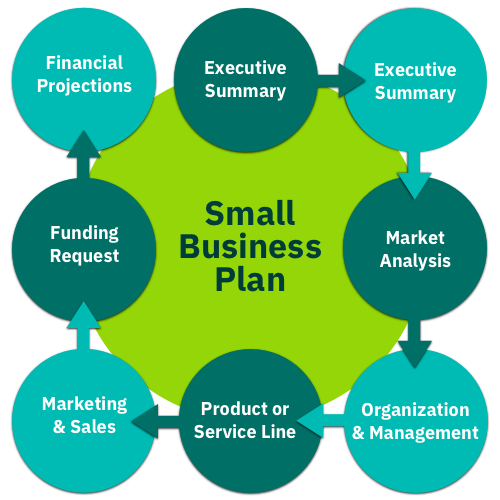You have a big idea, and you need funding. An investment teaser can help. It’s a brief one- or two-page document that sparks interest in your business. Think of it as a trailer for your startup. In a snapshot, it shows what you do, who you serve, and why it matters now. Investors often see hundreds of pitches each month. For example, one advisor notes that attractive investors review over 250 proposals each month and reject more than 95% of them. Your teaser must grab attention in seconds and make the investor want to learn more about your offering.
- What is an investment teaser? It’s a very short, visually clear summary of your startup. It explains the opportunity and asks. It is often prepared confidentially (on a “no-names” basis) so you can share key data without revealing everything. It is typically just one page, featuring charts or infographics. Its goal is to get investors to sign an NDA and request additional information.
Why use a teaser? Because you cannot pitch every detail upfront. The teaser is your first opportunity to make a good impression. A straightforward guide says it’s often “your company’s ‘first date’ with investors”. You use it to outline the core story and results, then wait for follow-ups.
Key Elements of an Investment Teaser
Your teaser should hit the main points that investors care about. Each part must be concise and clear. For example, one guide suggests including these components:
- Strong Title/Headline: A one-line hook that names your startup and hints at the opportunity. (E.g. “TechHealth Solutions – accelerating growth in an AI health-tech market worth £2.5bn”.)
- Executive Summary: A punchy overview stating what you do, how much you need, and quick highlights. For example: “TechHealth Solutions is seeking £5 million in Series A funding to scale our AI scheduling platform. In 18 months, we achieved 200% year-on-year growth and now serve 20 NHS trusts.”. Keep it very short.
- Market Snapshot: A few numbers on market size and trend. Show that the market is large or growing (e.g. “$2.5bn market, 15% CAGR”). This explains to investors why the opportunity is significant.
- Value Proposition: Explain the problem you solve and your solution. What makes you different? (For example, one teaser says “We automate inventory for 50 stores… 30% MoM growth”.) State your unique selling point.
- Business Model: In a line, say how you make money. List revenue streams or pricing (e.g. subscription, commission). Be concrete (describe units or customers if possible).
- Key Metrics/Traction: Show proof of progress. Use real numbers, such as user counts, revenue, growth rates, retention rates, or margins. For example, highlight “200% YoY growth”, customer count or monthly revenue. According to one source, financial highlights in teasers include revenue, revenue growth, and key KPI’s like LTV/CAC. Focus on your best numbers.
- Team Snapshot: Briefly note founders’ relevant experience or skills. (For example: “Founder has 10+ years in healthcare IT.”) This builds credibility.
- Use of Funds: State the amount you need and how you will utilise it (e.g., hire a team, expand into a new market). Investors want to know your plan.
- Call to Action: A final line on what you want. For example: “We are seeking $X for 18 months of runway.” Provide a contact (or mention NDA next steps).
Keep your teaser concise – usually no more than 1–2 pages. Use visuals (charts, infographics) where possible to make data pop. Avoid jargon and unnecessary detail. Every word should matter. One guide notes a good teaser covers “all relevant aspects” in a clear, to-the-point style. The investor should learn the basics even by skimming headings.
Questions to Answer
Investors will have key questions in mind when they read your teaser. You should answer them even if not asked outright. For example:
- What problem do you solve, and who has it? Describe the customer pain point. Think: “Who cares and why now?”.
- How big is the market, and what makes you unique? Quantify the market size or growth to demonstrate scale. Explain what sets your approach apart (technology, data, team).
- What traction can you show? Include any customers, revenue, pilots, or growth rates. Are sales or sign-ups climbing quickly? These facts build confidence.
- How much funding do you need, and why? State the round size and planned use. Will it buy 18 months of runway? Launch a new product? Be clear.
Answering these in your teaser gives investors a solid first impression and shows you’ve done your homework.
Investors will have key questions in mind when they read your teaser. You should answer them even if not asked outright. For example:
- What problem do you solve, and who has it? Describe the customer pain point. Think: “Who cares and why now?”.
- How big is the market, and what makes you unique? Quantify the market size or growth to demonstrate scale. Explain what sets your approach apart (technology, data, team).
- What traction can you show? Include any customers, revenue, pilots, or growth rates. Are sales or sign-ups climbing quickly? These facts build confidence.
- How much funding do you need, and why? State the round size and planned use. Will it buy 18 months of runway? Launch a new product? Be clear.
Answering these in your teaser gives investors a solid first impression and shows you’ve done your homework.
Investment Teaser Examples
Real examples help show the format. Here are a few illustrative teasers (adapted from actual guides):
- TechHealth Solutions (health tech): “TechHealth Solutions is seeking £5M in Series A funding to scale our AI-enabled health scheduling platform. In 18 months we’ve achieved 200% year-on-year growth and now serve 20 NHS trusts.”.
- Retail AI Startup: “We help small retailers in India automate inventory using AI, so they save hours of manual work and avoid stockouts. We live in 50 stores and are growing 30% month-over-month.”.
- Fintech Example: A one-pager might say: “LendFast is an online lender for small businesses. We are raising ₹5cr in seed funding. We grew loan approvals 150% in 6 months with ₹2cr in disbursed volume.” (No citation, illustrative.)
Each example focuses on essentials: a clear value statement, growth numbers, and the funding ask. Notice how they use concrete data to back up claims. Using such specifics will make your teaser more believable and engaging.
Stages of Investment in a Startup
Your fundraising needs and investors will change as your startup grows. Here are the typical stages (with a focus on early ones):
- Pre-Seed: You’re in the idea or prototype phase. Funding usually comes from personal savings, friends/family or small grants. Amounts are modest (often under $250K). You use this to build a prototype and validate the idea. An investor teaser at this stage can be very simple.
- Seed: You have some prototype or early product. You seek angels, incubators, or seed funds. In India, this often includes startup grants or government seed schemes. Utilise seed funding to finalise product development and establish product-market fit. Your teaser will highlight early customer feedback, a clear problem and solution, and initial market tests. (Global data show median seed rounds around $3M.)
- Series A: Product-market fit is proven. You now need capital to scale. Venture capital firms or strategic angels lead Series A rounds. You may also add debt or bank loans if you have revenue. Your Series A teaser or pitch deck will stress user growth, revenue model, and expansion plans. Investors expect solid metrics (e.g. monthly revenue, active users) and a plan to grow the business. (In 2024, the median Series A was about $11.3M)
- Series B: At this stage you’ve shown growth and need funds to expand market share or product lines. Larger VC funds or even private equity might invest. Typical goals include hiring key staff, entering new regions or scaling sales. The median Series B round is often in the tens of millions. A teaser (or deck) will highlight strong traction and clear plans for scaling further.
- Later Rounds (C, D, etc.): These are for mature startups. Money is used for big expansions, acquisitions, or preparing for an IPO. Many startups skip extra rounds if earlier growth suffices. Teasers at this level may look more like private placement memorandums, but the principle is the same: clear facts, big numbers, and reasons to invest now.
At each stage, target the right investors. For example, don’t send a seed-stage tech teaser to a fund that only backs large, established companies. Focus on angels and seed funds early on, and move up to VCs as you grow. Always tailor the content to the stage: early teasers stress potential and team, later ones stress proven results and scale.
Your investment teaser is a powerful tool to attract early investors. Use it to tell a clear, data-driven story. Focus on what matters to an investor: problem, market, traction, and team. Keep it short, use numbers not fluff, and always edit ruthlessly. Do that, and you’ll give investors a reason to say “tell me more.”
Conclusion
Creating an investment teaser isn’t about making noise. It’s about showing value.
You’re asking investors to stop, pay attention, and consider your startup. To do that, you need to be clear, specific, and honest.
You only have a few seconds to earn their interest.
That means cutting the fluff. Keeping it short. Using real numbers. And answering the questions that matter.
What problem do you solve?
Who wants your product?
How big is the opportunity?
What traction have you achieved?
Why are you raising funds—and how will you use them?
These are not just checkboxes. They’re signals. They tell investors you’re not guessing—you’re building.
The best founders don’t wait to get lucky. They prepare. They plan. They take time to package their story well.
That starts with the teaser.
If yours is thoughtful, sharp, and backed by progress, you’ll get more replies, more meetings, and more serious conversations.
So take your time. Write like you respect the reader. Lead with value. And always remember—your teaser is not just a document. It’s your first pitch.
Make it count.







